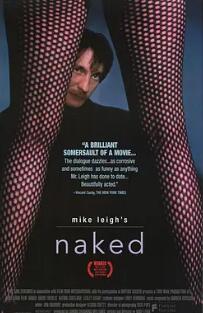
导演:
主演:
上映:
0
更新:
2024-12-02 19:19
剧情:
"Bob Dylan going electric" at the 1965 Newport Folk Festival is one of those epochal mome..
- 线路3
猜你喜欢
2024
10.0分
剧情片
玛欣因丈夫早逝、儿孙成年离家,生活仿佛单身独居女郎。退休多年的她,每天睡到日上三竿,再与好友聚餐,安然而自得。外人看来自由自在的日常,她却感到索然无味,望着街上结伴的人群,孤单涌上心头。直到邂逅腼腆的出租车司机,有如遇见另一个寂寞的灵魂,她心血来潮邀请对方到家里共度夜晚,端出拿手蛋糕佐美酒,重温青春的舞蹈乐章。而他们并不知道,这一夜,将成为两人一生最难忘的时刻。
正片
1939
8.0分
剧情片
HD中字
2024
5.0分
剧情片
HD中字
1993
10.0分
剧情片
大卫·休里斯 莱斯利·夏普 凯特琳·卡特利吉 克莱尔·斯金纳 彼得·怀特 艾文·布莱纳 吉娜·麦基 格雷格·克鲁特威尔 苏珊·维德勒 黛博拉·麦克拉伦 卡罗莱娜·贾梅塔 伊丽莎白·贝林顿 Darren Tunstall Robert Putt Lynda Rooke
/
冷酷粗暴的流浪汉约翰尼(大卫·休里斯 David Thewlis饰)来到伦敦寻找自己的前任女友路易丝·克兰西(莱丝莉·夏普 Lesley Sharp饰),从一座失业问题严重的工业城市曼彻斯特来到交织在光鲜与黑暗中的大都市伦敦。约翰尼结识了路易丝的室友索菲(凯特琳·卡特利吉 Katrin Cartlidge饰),两人当天就在公寓做了爱。一觉醒来,已经爱上约翰尼的索菲得到的却是约翰尼一副玩世不恭..
HD中字
2024
8.0分
剧情片
托马索·拉尼奥 朱塞佩 德 多梅尼科 卡洛塔·甘巴 萨拉·萨里约科 Roberta Rovelli 玛蒂娜·斯科林奇 Orietta Notari Santiago Fondevila Sancet Rachele Potrich Anna Thaler Patrick Gardener Enrico Panizza Luis Thaler Simone Bendetti
/
二战尾声,意大利北境阿尔卑斯山,遗世独立小村内,战火未实际波及,成年男性却逃不过上战场的命运。物资缺乏,老教师仍开班授课,学生不分年龄。他们一家十口,每日劳动、祷告,听古典乐,过着周而复始的恬静日常,直到西西里逃兵闯入,扰乱了家中女孩们的心绪。季节更替,万物生灭,雪融带来暖意,也让秘密浮现,当战争结束的好消息终于传来,这一家要面临的冲击才将开始。
HD中字
1998
10.0分
剧情片
36岁的公司职员贝葛娜(劳拉·莫兰特 Laura Morante 饰)性感美丽,但是她雍容端庄的外表下却有着常人难以理解的疯狂与放荡。她与家人的关系格外紧张,特立独行且显得愤世嫉俗。她似乎始终在寻找爱情,却又不相信爱情,每时每刻周游在各类男人之间,尽情享受肉体的欢愉,然而总也找不到可以依靠的港湾。无论是年龄悬殊的老画家,还是故作严肃的同事,抑或是多年未见的情人,又或者是初出茅庐面带青涩的大男..
HD中字
《镜子的另一面:纽波特民歌艺术节1963~1965》剧情介绍
影视大全提供影视作品镜子的另一面:纽波特民歌艺术节1963~1965高清全集在线观看的影视全集网,剧情片《镜子的另一面:纽波特民歌艺术节1963~1965》全集作品的导演是Murray Lerner ,由Bob Dylan Joan Baez Judy Collins 主演,镜子的另一面:纽波特民歌艺术节1963~1965在豆瓣的评分为9.0,本片由小编于2024-12-02 19:19更新,希望大家喜欢,可以把《镜子的另一面:纽波特民歌艺术节1963~1965》推荐给你朋友,本作品的地址为 https://www.545s.com/s/index/28242.html
《镜子的另一面:纽波特民歌艺术节1963~1965》简介:"Bob Dylan going electric" at the 1965 Newport Folk Festival is one of those epochal moments in rock history that seemingly everyone has heard about, but what few people seem to know is that it wasn't some ephemeral event that we only know from word of mouth -- filmmaker Murray Lerner documented the performances at the Newport Festival for several years running, and The Other Side of the Mirror collects footage from the three years Dylan appeared at the celebrated folk gathering, allowing us to see Dylan's rise through the folk scene for ourselves. Watching Lerner's documentary, what's most remarkable is how much Dylan changed over the course of 36 months; the young folkie performing at the afternoon "workshop" at the side of Joan Baez in 1963 is at once nervy and hesitant, singing his wordy tunes while chopping away at his acoustic guitar and energizing the crowd without seeming to know just what he's doing. In 1964, Dylan all but owns Newport, and he clearly knows it; he's the talk of the Festival, with Baez and Johnny Cash singing his praises (and his songs), and his mand of the stage is visibly stronger and more confident while his new material (including "Mr. Tambourine Man" and "It Ain't Me, Babe") sees him moving away from the "protest songs" that first made his name. When the audience demands an encore after Dylan's evening set (Odetta and Dave Van Ronk were scheduled to follow him), Peter Yarrow tries to keep the show moving along while Dylan beams at the crowd's adulation, like the rock star he was quickly being. By the time the 1965 Newport Festival rolled around, Dylan's epochal "Like a Rolling Stone" was starting to scale the singles charts, and the hardcore folk audience was clearly of two minds about his popular (and populist) success. When Dylan, Fender Stratocaster in hand, performs "Maggie's Farm" backed by Al Kooper, Mike Bloomfield and the rhythm section from the Paul Butterfield Blues Band, the raucous but hard-driving number inspires a curious mixture of enthusiastic cheering and equally emphatic booing, and while legend has it that the version of "Like a Rolling Stone" that followed was a shambles, the song cooks despite drummer Sam Lay's difficulty in finding the groove, though if anything the division of the crowd's loyalties is even stronger afterward. After these two numbers, Dylan and his band leave the stage, with Yarrow (once again serving as MC) citing technical problems (if Pete Seeger really pulled the power on Dylan, as legend has it, there's no sign of it here); Dylan returns to the stage with an acoustic six-string to sing "Mr. Tambourine Man" and "It's All Over Now, Baby Blue" before vanishing into the night without ment. While much of the audience at Newport in 1965 wanted the "old" Dylan back, his strong, willful performances even on the acoustic stuff makes it obvious that the scrappy semi-amateur we saw at the beginning of the movie was gone forever, and the ovations suggest more than a few people wanted to see Dylan rock. Lerner's film tells us a certain amount of what we already knows, but it gently debunks a few myths about Dylan during this pivotal moment in his career, and his performances are mitted and forceful throughout; no matter how many times you've read about Dylan's Newport shoot-out of 1965, seeing it is a revelatory experience, and Lerner has assembled this archival material with intelligence and taste. This is must-see viewing for anyone interested in Dylan or the folk scene of the '60s.





